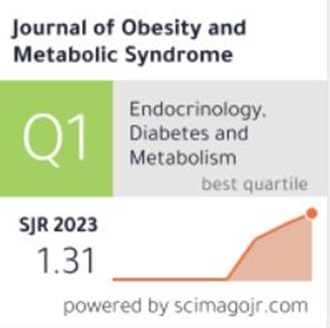Healthy versus Unhealthy Adipose Tissue Expansion: the Role of Exercise
IF 4.7
Q1 ENDOCRINOLOGY & METABOLISM
引用次数: 6
Abstract
Although the hallmark of obesity is the expansion of adipose tissue, not all adipose tissue expansion is the same. Expansion of healthy adipose tissue is accompanied by adequate capillary angiogenesis and mitochondria-centered metabolic integrity, whereas expansion of unhealthy adipose tissue is associated with capillary and mitochondrial derangement, resulting in deposition of immune cells (M1-stage macrophages) and excess production of pro-inflammatory cytokines. Accumulation of these dysfunctional adipose tissues has been linked to the development of obesity comorbidities, such as type 2 diabetes, hypertension, dyslipidemia, and cardiovascular disease, which are leading causes of human mortality and morbidity in modern society. Mechanistically, vascular rarefaction and mitochondrial incompetency (for example, low mitochondrial content, fragmented mitochondria, defective mitochondrial respiratory function, and excess production of mitochondrial reactive oxygen species) are frequently observed in adipose tissue of obese patients. Recent studies have demonstrated that exercise is a potent behavioral intervention for preventing and reducing obesity and other metabolic diseases. However, our understanding of potential cellular mechanisms of exercise, which promote healthy adipose tissue expansion, is at the beginning stage. In this review, we hypothesize that exercise can induce unique physiological stimuli that can alter angiogenesis and mitochondrial remodeling in adipose tissues and ultimately promote the development and progression of healthy adipogenesis. We summarize recent reports on how regular exercise can impose differential processes that lead to the formation of either healthy or unhealthy adipose tissue and discuss key knowledge gaps that warrant future research.健康与不健康的脂肪组织扩张:运动的作用
虽然肥胖的标志是脂肪组织的扩张,但并非所有脂肪组织的扩张都是相同的。健康脂肪组织的扩张伴随着充足的毛细血管生成和以线粒体为中心的代谢完整性,而不健康脂肪组织的扩张与毛细血管和线粒体紊乱有关,导致免疫细胞(m1期巨噬细胞)的沉积和促炎细胞因子的过量产生。这些功能失调脂肪组织的积累与肥胖合并症的发展有关,如2型糖尿病、高血压、血脂异常和心血管疾病,这些疾病是现代社会人类死亡和发病率的主要原因。在机制上,在肥胖患者的脂肪组织中经常观察到血管稀疏和线粒体功能不全(例如,线粒体含量低、线粒体碎片化、线粒体呼吸功能缺陷和线粒体活性氧的过量产生)。最近的研究表明,运动是一种有效的行为干预,可以预防和减少肥胖和其他代谢疾病。然而,我们对运动促进健康脂肪组织扩张的潜在细胞机制的理解尚处于起步阶段。在这篇综述中,我们假设运动可以诱导独特的生理刺激,从而改变脂肪组织中的血管生成和线粒体重塑,最终促进健康脂肪生成的发展和进展。我们总结了最近关于定期锻炼如何影响导致健康或不健康脂肪组织形成的不同过程的报道,并讨论了保证未来研究的关键知识空白。
本文章由计算机程序翻译,如有差异,请以英文原文为准。
求助全文
约1分钟内获得全文
求助全文
来源期刊

Journal of Obesity & Metabolic Syndrome
ENDOCRINOLOGY & METABOLISM-
CiteScore
8.30
自引率
9.60%
发文量
39
审稿时长
19 weeks
期刊介绍:
The journal was launched in 1992 and diverse studies on obesity have been published under the title of Journal of Korean Society for the Study of Obesity until 2004. Since 2017, volume 26, the title is now the Journal of Obesity & Metabolic Syndrome (pISSN 2508-6235, eISSN 2508-7576). The journal is published quarterly on March 30th, June 30th, September 30th and December 30th. The official title of the journal is now "Journal of Obesity & Metabolic Syndrome" and the abbreviated title is "J Obes Metab Syndr". Index words from medical subject headings (MeSH) list of Index Medicus are included in each article to facilitate article search. Some or all of the articles of this journal are included in the index of PubMed, PubMed Central, Scopus, Embase, DOAJ, Ebsco, KCI, KoreaMed, KoMCI, Science Central, Crossref Metadata Search, Google Scholar, and Emerging Sources Citation Index (ESCI).
 求助内容:
求助内容: 应助结果提醒方式:
应助结果提醒方式:


